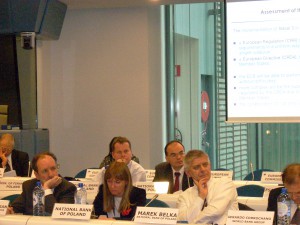
Conceived as an emergency response to the threat of an exodus from emerging Europe by Western banks, it has now evolved to assume a permanent role in addressing dangers faced by the region’s financial sector.
A powerful example of a successful relationship between the public and private sectors, the Vienna Initiative brings together all the key stakeholders in the EU-based cross-border bank groups that are active in emerging Europe.
These include major international financial institutions as well as the most important European institutions, home and host country regulatory and fiscal authorities of large cross-border bank and the largest banking groups operating in emerging Europe.
The EBRD, EIB, European Commission, IMF, and the World Bank played a key role in the creation and further development of the Vienna Initiative.
In its initial stage, the Initiative provided a forum for dialogue to create the right conditions for Western banks to remain engaged in emerging Europe.
The initial key objectives of the Initiative were the following:
- Prevent a large-scale and uncoordinated withdrawal of cross-border bank groups from the region, which could have triggered systemic bank crises not only in individual countries but in emerging Europe as a whole.
- Ensure that parent bank groups maintain their exposures and recapitalise their subsidiaries in emerging Europe
- Ensure that national support packages of cross-border bank groups benefited their subsidiaries in emerging Europe and thus avoided a “home bias”.
- Agree on, and implement, basic crisis management principles in the region
These objectives were achieved and the Initiative has been widely credited to have helped avoid a potentially region-wide systemic crisis in emerging Europe’s banking sector.
